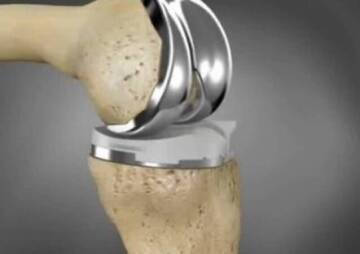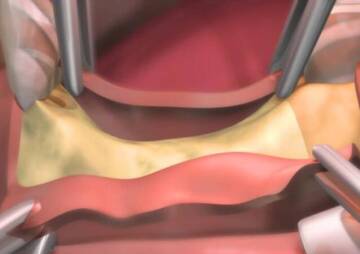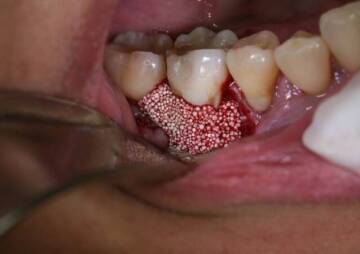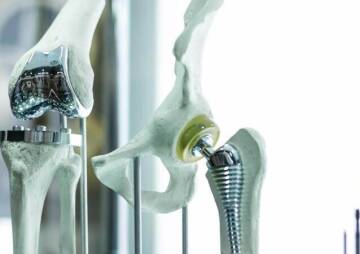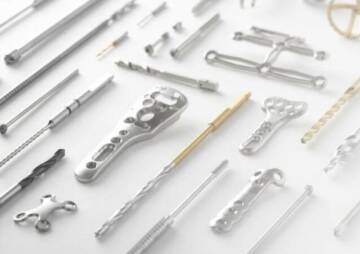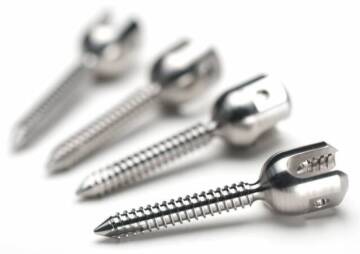-
Category
Craniomaxillofacial Surgery
Orthopedic Surgery
Spine Surgery
Orthopedic Implants
Hip Surgery
Knee Surgery
Pectus Excavatum
Bone Graft
Disinfectants
Healthcare
The latest methods of designing and manufacturing orthopedic implants
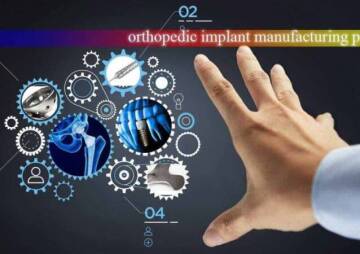
To get acquainted with the process of making implants, you should visit production sites. In these production sites, high-tech processes help to produce orthopedic implants and advanced surgical instruments, which you will learn about in this article.
When the idea of building a new implant develops, work often begins with medical engineers and develops. First, a quick prototype of a milling machine is made to get an overview of the whole and possible defects and details. Engineers, along with physicians, begin making each medical implant. The process of making orthopedic implants has progressed considerably almost every year. Each of the medical engineering laboratories has its own details and techniques, but in all of them, a general method can be observed. In the following, we will learn how to turn an idea into a real physical product, something we often do not think about. To get acquainted with the method of making implants, you should visit production sites. At these production sites, high-tech processes assist in the production of orthopedic implants and the development of advanced implant surgical instruments.Manib Company with a group of medical engineering experts tries to provide the latest products and services in the field of orthopedic implants.
What are the common types of orthopedic implants?
The three most common types of orthopedic implants are screws, plates, and prostheses. There are different types of orthopedic surgical implants. Depending on the type of injury, different implants are used to repair an area of the body that is damaged.
Screw implants in orthopedics
Orthopedic screws are available in two types: flat and Phillips head. Screws are used in all parts of an implant surgery. Surgeons usually use only screws to repair broken bones or restore stability to weak bones. Usually the screws that are implanted in the bones are not removed later. There is no other way to install the screws. First a hole is made in the desired bone and then the screw is planted in the right place with the least pressure on the bones.
Plaque-shaped implants
The second type of surgical implant is in the form of a plate or plate. Plaque was first used more than 50 years ago in 1886 to heal a broken bone.
Like screws, there are different types of plates with different shapes that are used to reconnect fractures and patient defects. Plaques are more likely to be attached to the ends of bones and re-strengthen fractures. Surgeons know exactly what type of plate to order for each bone lesion. A type of plaque is used to cover the fracture site. Bridge plates create length and alignment and stabilize around broken bones. Compression plates are used to hold and weld bones until they heal. Tension plates hold the weakened area secure until it heals. To be able to choose each page, you must have a thorough knowledge of anatomy.
Prostheses
The latest type of orthopedic implant is prosthesis. There are several prostheses used by orthopedists to replace joints, broken bones and amputations. Prostheses can sometimes completely restore the body to its full potential in a short period of time. Knee and arm prostheses are most commonly used by patients. A prosthetic surgeon must have complete and up-to-date information from the best prosthetic companies in the world. for example :
- The Austin Moore prosthesis is used for neck fractures.
- To replace the elbow, box prosthesis and suture is the best model available in the orthopedic prosthesis market.
- Luque rods are used to secure the spine .

How orthopedic implants are made
CNC method
Almost all implants and implant surgical instruments are made of a metal block such as titanium or composite plastic such as PEEK. Metal blocks or rods are sent into large industrial multi-axis milling machines (CNC's) that have a number of robotic arms and a cutting guide with the best miniature turning features. These machines are sensitive and very precise models similar to machine parts making machines that can do turning and modeling in five ways. By the middle of the work, the sixth aspect of each piece is kept intact as a base. After the milling is completed, the electric discharge wire (EDM) cutting machine removes the base and cuts the sixth face according to the design.
The most important thing in implant making machines is to move the part without changing the coordinates of any point of the implant body so that the turning in different aspects can be done with the highest accuracy and the best quality. Although milling is done with industrial robots, most of the remaining work is done by highly skilled technicians.

If the implant needs a matte surface, the technician will go for a sandblast to remove the metal shine as needed. The technician also uses a rotary sander to deburr and polish the part. After this neighborhood, the information of the parts is lasered on them and goes to a quality laboratory to check the different properties of the parts with automatic tools and high accuracy. There is also a device called an optical comparator that simulates the enlarged image of the part on a simulation screen to compare the accuracy of the part production with the original design. Finally, all parts are cleaned with ultrasonic. They are also passive with nitrate or citrate to prevent corrosion. It is at this point that the orthopedic implant manufacturing process is completed.
Electron beam melting technology (EBM) in implant manufacturing

Design technology and manufacturing process of orthopedic implants Using electron beam melting technology, which is a type of 3D printing, is the latest method of implant production in the world, where each piece is made directly according to the 3D computer model. In this method, the raw materials are melted and thin layers of materials complete the layer by layer of the desired part. This method has been developing over the last 20 years.
Basically, the digital 3D reconstruction method of anatomical models created completely new opportunities for various industries. The construction of orthopedic implants also did not stop with 3D modeling and made significant progress. In medical collections, the way to 3D modeling was paved due to the presence of CT scans, and therefore such an improvement could be expected. Because each person's bones are different in shape and require unique surgery to repair them when they break, making any plaque or prosthesis by following the patient's bone line makes orthopedic surgery more successful. In this way, implant surgery has been able to help a lot to increase human life expectancy and rejuvenate organs. Studies have shown that the EBM method has great potential in orthopedics. Making custom plates and plates based on the EBM method has resulted in a significant reduction in the high cost of orthopedic procedures.

The advantages of saving the raw materials and reducing the manufacturing time are the advantages of EBM method. Clinical studies at universities in several leading countries have demonstrated excellent results in improving patients and their quality of life using electron beam melting technology. Orthopedic implants are made from biocompatible metals.
Initially, direct 3D production with titanium was not possible. In the older method, the physical model based on accurate CT scan of each patient's bones by electron beam melting was the best basis for making the original parts with titanium. It should be noted that the most expensive part of making implants is the molding stage, which has increased the manufacturing accuracy with the digital 3D method and the costs have been reduced to a great extent. With the development of electron beam machines, it became possible to directly melt titanium and fabricate a titanium piece from the digital model of each orthopedic bone. This moment is unforgettable for medical science and the process of making orthopedic implants .

Today, orthopedics, despite digital modeling, both in the planning stage of the operation and during the operation, has complete control and vision over the angles of the bone, the location of the screws and plates, and can consider everything before each operation. Computer support with electron beam melting machines has dramatically increased the orthopedic surgeon's power and finesse over the past decade.
The raw material used for medical application in electron beam melting method is Ti6Al4V ELI (grade 23). This biocompatible material has a particle size of 45 to 100 micrometers. In many studies with titanium 23, the electron beam melting method has been successful and the fabricated plate has sufficient properties as usual.
Familiarity with different materials of orthopedic implants
Currently, three categories of materials are used in artificial orthopedic devices.
Metals, polymers and ceramics.
It should be noted that biocompatible metals are still known as the most widely used material in the manufacture of orthopedic implants due to their application in various methods such as electron beam melting.
-
Biocompatible metals
The metals used in the orthopedic implant manufacturing process include surgical stainless steel (usually 316L), cobalt-chromium-aluminum (Co-Cr), and pure commercial titanium (Ti) or aluminum-titanium.
Stainless steel is used in non-permanent implants such as internal stabilizers and pacemakers due to its high strength against fatigue and the special property of resistance to plastic deformation. Prior to the use of titanium, cobalt-based aluminum largely replaced stainless steel as a material for permanent implants, but became obsolete due to its carcinogenic potential.
The use of titanium in orthopedic implants includes commercial pure aluminum and titanium, for example Ti-6Al-4V. These metals are highly biocompatible. However, some concerns remain about the effects of vanadium and aluminum. Titanium and its derivatives are more resistant to corrosion than Co-Cr alloys due to the formation of titanium oxide on the surface. Although titanium is extremely good at biocompatibility, abrasion of the titanium oxide layer can lead to the release of particles into the surrounding tissues. Identifying these residual particles is a good answer to why undesirable tissues appear and why titanium implants loosen in the long run.

Why is Titanium 23 the best in orthopedic medicine?
Ti-6Al-4V ELI and Ti-6Al-4V titanium are the most widely used in orthopedic implant manufacturing process. The most common types of aluminum in the manufacture of medical titanium are two special aluminum alloys. 6AL4V and 6AL4V ELI aluminum with 6% aluminum and 4% vanadium are popular in medical engineering because of their compatibility with the human body. Ti-6Al-4V ELI and Ti-6Al-4V titanium They are the most resistant to changes in temperature, time and tension. This alloy is the best choice for replacing broken thigh sockets, severely broken bones, ribs of the chest, spine, fingers and bones of the face, bone plates, rods and wires required in orthopedic surgery. Dental implant surgery has made amazing progress due to the properties of this titanium. This type of operation begins with the insertion of a titanium rod into the jaw, and then a titanium screw is attached to the rod like a tooth root and used as a base, which is durable, very delicate, antibacterial and abrasive.
Advantages of Titanium Surgical Instruments
We mentioned some of the benefits of titanium, but the list of benefits is very long. These advantages make titanium useful for various industries. Titanium is highly biocompatible due to its abrasion resistance and has a delicate ability to attach to human bone, which has become a key member of orthopedic medicine. From surgical instruments to orthopedic and dental rods, they are all titanium. Titanium also has the ability to adapt to living bone, and this advantage has made great strides in the world of dentistry and dental implants.
Surgery and orthopedic instruments have made a huge leap thanks to the presence of titanium.
- Titanium tools are harder and lighter than steel
- Titanium is resistant to bacteria
- It can be used with radiation emitting devices
- Ultra-durable titanium has a longer lifespan than normal human life
Ti-6Al-4V ELI and Ti-6Al-4V titanium are also the most resistant to fracture, and today the construction of beautiful orthopedic implants can not be imagined without this titanium.
-
Polymers
Polymers are formed by bonding a large number of monomers with the help of chemical reactions. The most popular orthopedic polymer is ultra-high molecular weight polyethylene (UHMWP) or high-density polyethylene (HDP). In the process of making orthopedic implants, polyethylene is by far the best material compared to metal or ceramic.
The main problem with polymers compared to their competitors is the deformation under load, commonly called creep. The second problem with polyethylene is progressive wear. For this reason, carbon fiber is added to strengthen the mechanical strength of polyethylene. Although carbon fiber improves creep and tensile strength, it reduces its resistance to surface abrasion of these implants.
- ceramic
Ceramics used in orthopedic implants include aluminum oxide and calcium phosphate. These ceramic materials are very resistant to pressure but are weak and brittle under tension. Aluminum oxide (alumina) ceramics form a kind of powder using simultaneous pressure and temperature. This process, called hot-pressing, results in a high-density end product with small grain size and good mechanical properties. Ceramic has a high hardness and modulus of 330,000 milliseconds relative to bone, which may, by pressure, lead to bone breakage or premature loosening of ceramic sockets due to non-aligning elastic properties.
Although experiments have shown excellent results in the tribology and abrasion of alumina ceramic implants, unacceptable abrasion has still been observed in ceramic implants after several years of use. Another reason to reduce the use of ceramics is its low tolerance to impact. The ceramic cracks quickly and the ceramic crack breaks quickly.

The orthopedic implant manufacturing and biomedical industries are expected to continue to expand. With the growth and development of artificial body parts, human life expectancy is expected to increase rapidly and the demand for orthopedic surgeries and artificial limbs will also increase. Active human life throughout life and long youth is no longer a human dream and we can say that we have achieved it but it is not yet available to everyone. In the near future, the benefits of longevity and a world without physical disabilities are envisaged thanks to the presence of orthopedic implants. However, the high cost of the industry and the risk of monopolization are still a major concern.
Health News Center has been able to play an important role in providing this valuable medical product to less developed countries by providing high quality and competitively priced implants. To view Health News Center implants, refer to the products.
